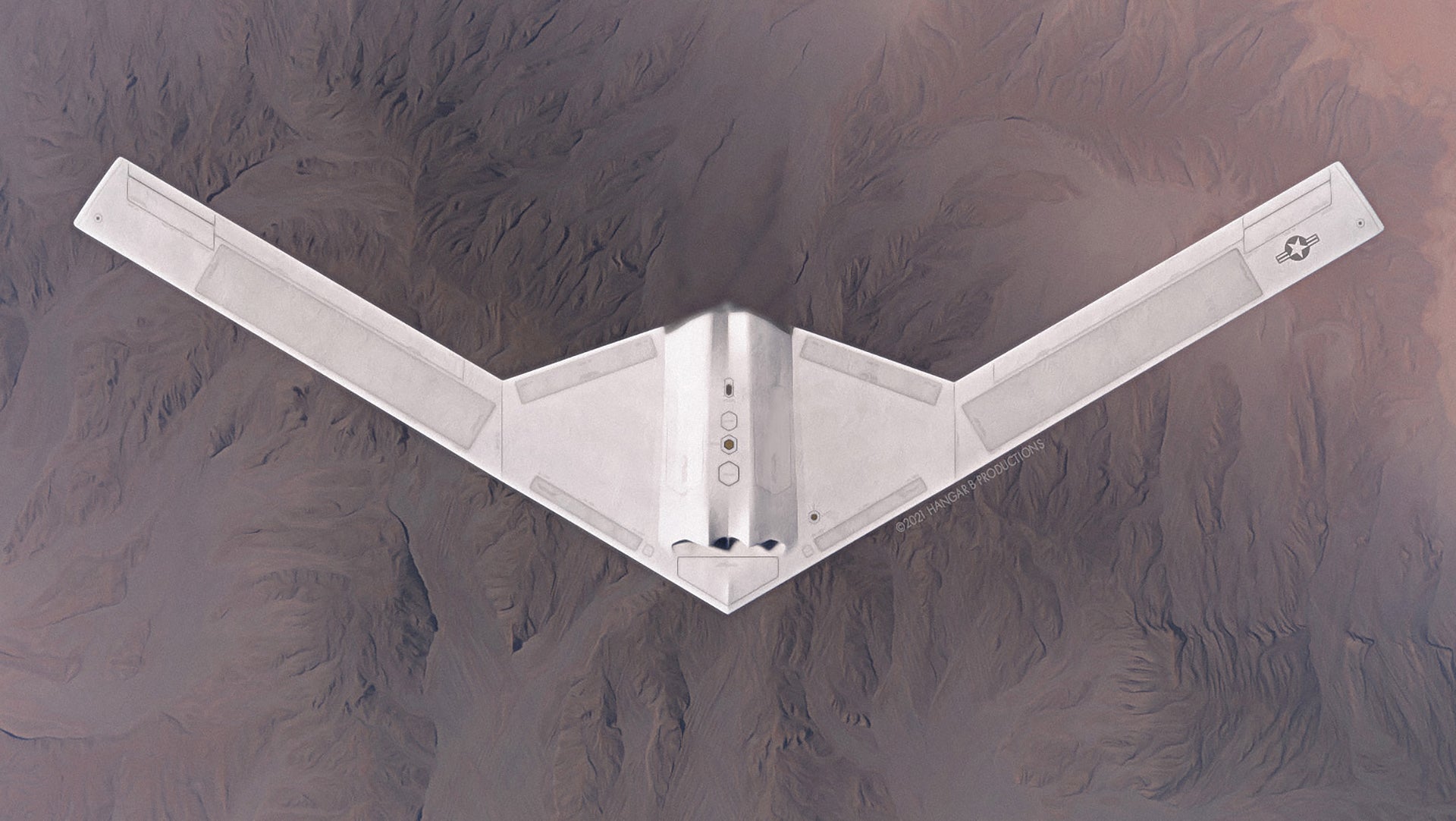When it comes to phantom aircraft that are the product of ‘bleeding-edge’ technologies and supposedly exist only in the shadows, the so-called RQ-180 is unrivaled in our time. The existence of this high-altitude, long-endurance (HALE) stealth drone has all but been officially disclosed. Specters of its existence and growing maturity seem to materialize around every turn, and as of November 2020, the public may have gotten its first glimpse of this aircraft that has existed behind a veil of secrecy and innuendo for over a decade. This is the first in a three-part series—the product of a ghost hunt of sorts that has lasted well over two years—that tells the story—as best as we can piece it together—of what is likely the most important military aircraft of a generation.
What is an “RQ-180?”
First off, we have no idea what the exotic flying machine in question’s actual designation is. The name comes from Aviation Week’s original reporting on an aircraft that some of us had speculated existed for some time. The RQ-180 designation is simply a notional expansion of the designation of Lockheed Martin’s Skunk Works’ RQ-170 Sentinel. The two platforms are in some way complementary to one another, but the RQ-170 is definitely the older, lower-tier, lower-flying, more tactically-oriented, and less advanced of the two concepts. Both are flying wing designs. They are or certainly will be capable of integrating together, at least to some degree, but beyond that, they are not directly related.
With that said, we need to start at the basics—what is this aircraft supposed to do and why does it exist?
This is an impossible question for us to answer definitively at this time, and details are bound to change, in some cases significantly, but drawing on a large number of clues, open-source information, historical precedent, capability gaps, emerging technologies, ongoing procurement and development initiatives, the picture, at least as we see it, becomes somewhat clear.

As we understand how something like this would fit into a larger revolutionary air combat and networking ecosystem the Pentagon is quietly building out, the RQ-180 could be defined as a networking and reconnaissance platform that is capable of penetrating and persisting deep into enemy airspace. We are talking about a large, twin-engine, flying wing aircraft with slender laminar-flow optimized wings. Its overall design is largely motivated by highly advanced, broadband, all-aspect, very low-observable (stealth) requirements. It is meant to fly at very high altitudes in contested airspace, at or in excess of 70,000 feet, for very long periods of time without ever being detected.
It’s important to note that while the reconnaissance side of its mission set gets all the attention, we believe the RQ-180’s potential ability to work as a high-flying networking node and information gateway is likely even more important, as we have touched on over the years.
Let’s break these two mission sets down in regards to what this platform could bring to the table and why its capabilities would be so critically important.
A high-flying, long-endurance, and survivable information gateway
Just because you can build and deploy aircraft like B-21 Raiders, F-22 Raptors, F-35 Lightnings, and advanced unmanned combat air vehicles—low-observable (stealthy) combat aircraft that can work to knock down the enemy’s air defenses or sneak past them entirely to deliver devastating blows to critical targets—it doesn’t mean you can leverage these forces to their maximum potential. The F-117 Nighthawk, the world’s first operational stealth aircraft, provided next to no real-time situational awareness to its pilot. Literally, they were cocooned inside its stealth bubble, cut off from the war-torn environment exploding around them.
Highly detailed computer-based mission planning, which was absolutely state-of-the-art at the time of its introduction, leveraged the latest intelligence and the careful execution of that plan was just as important to the F-117’s survivability as its stealthy design. This planning also included critically-timed pre-planned coordination with other assets, like electronic warfare aircraft, which F-117s crews had no control over during their missions. Once an F-117 pilot passed into contested airspace, it was just them and their mission plan, which by then was based on hours or even days-old information. Even two-way voice communications were all but non-existent once the jet was ‘cleaned up’ to maximize its low-observable cloak.
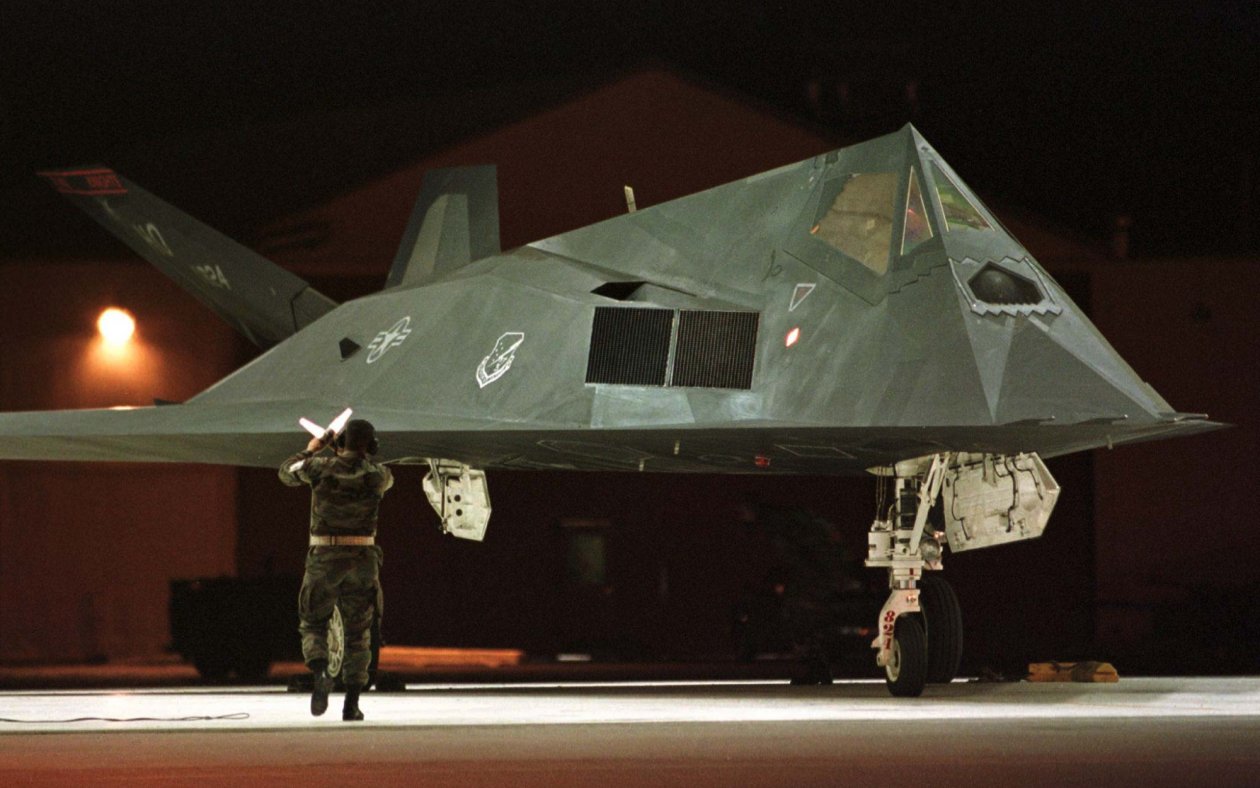
It is important to remember that stealth aircraft are not actually invisible to radar, but can avoid detection as long as they remain at a certain distance from a particular threat. That distance is dependent on an aircraft’s stealthy design, its aspect in relation to a said threat system, and that threat system’s unique capabilities. This equation changes with the frequency that the threat emitter is operating on and the stealth aircraft’s ability to minimize its returns against those particular radar emissions. Thankfully, for most stealthy aircraft, the range difference between intermittent detection and the threat’s ability to successfully engage is vastly different. Today, electronic warfare capabilities, including onboard stealth aircraft as well as external to them, play a big part in their survivability.
Regardless, fast forward to the present and the most valuable weapon one can have on an incredibly fast-moving modern battlefield is information and lots of it. Real-time awareness of threats that can pose a danger even hundreds of miles away can mean the difference between life and death.
Information equals survivability and lethality
Information in the form of battlefield situational awareness is now also key to the survivability of combat aircraft, and especially stealthy aircraft that will be operating in the highest risk areas. They need to know everything relevant that is happening around them so they can alter their game plan on the fly, which could include killing direct threats as they emerge or assisting other aircraft in rapidly finding and killing them before they pose a major risk to other assets in the battlespace.
But there is a larger picture. The sharing of critical information across huge areas in such a way that it does not give away the positions of those connected to the network and being able to fuse huge amounts of data from disparate platforms and send it all over the globe are the keys to winning the future fight. This is extremely challenging to do with stealth aircraft whose radio frequency emissions can give away their presence just as easily as if their stealthy cloaks were suddenly ripped away.
Past datalink systems that are omnidirectional in nature and were not developed for low-observable (stealthy) operations just won’t do. As such, new waveforms and datalink architectures have been developed that are highly directional in nature and use the latest in antenna technologies combined with low-probability of intercept (LPI) transmission methods to make them nearly undetectable and largely unjammable.

The F-35’s Multifunction Advanced Data Link (MADL) is the system that is being adopted not just for its originating aircraft, but also for the B-21, and likely other new stealthy aircraft belonging to a family of systems that will make air combat of the past look quaint in comparison.
MADL can connect F-35s, and in the future, disparate stealthy platforms, together in a secure manner within line-of-sight via a mesh-like network. Just like any fighter datalink system that relies on line-of-sight connectivity, MADL is great for formations of aircraft that operate in the vicinity of one another, but it has major limitations. Namely, the battlefield of tomorrow will be expansive with massive amounts of data accrued from sensors in space, on the ground, at sea, and in the air, both on and over the battlefield and hundreds or even thousands of miles away, along its outer edges. While the F-35’s organic electronic intelligence-gathering capabilities are fantastic, and the B-21 will be even more so, they pale in comparison to being able to exploit data from a far larger array of dispersed platforms and intelligence sources, some of which won’t have MADL and won’t be within line-of-sight of stealthy aircraft with the datalink system.

More importantly, it isn’t just a way-one connection that is needed. Being able to exchange information in both directions and have a forward operating stealthy platform help cue a weapon on a target when that weapon may be located hundreds or thousands of miles away will be another key to winning tomorrow’s war. For instance, an F-35 may detect a target of opportunity, or maybe even an impediment to its own mission, that is too heavily defended even for it or its available weapons to make a successful attack on it. A hypersonic weapon, located on a destroyer many hundreds of miles away, would not have a problem neutralizing it. The real-time targeting data acquired by the F-35’s sensors will be needed by the ship launching the weapon and even possibly piped to the hypersonic weapon as it makes its high-speed approach to its target. This type of remote launch concept is all based on seamless data sharing across a vast battlespace.
Right now, that may be possible by ‘daisy-chaining’ MADL-equipped aircraft together in order to push info they collect securely back towards less contested territory, and data forward, as well. Once outside contested airspace, the MADL data can be passed to a very non-stealthy information gateway platform in the air, at sea, or on the ground, that can then send that information to other players in the battlespace and around the globe via a high-bandwidth satellite datalink.
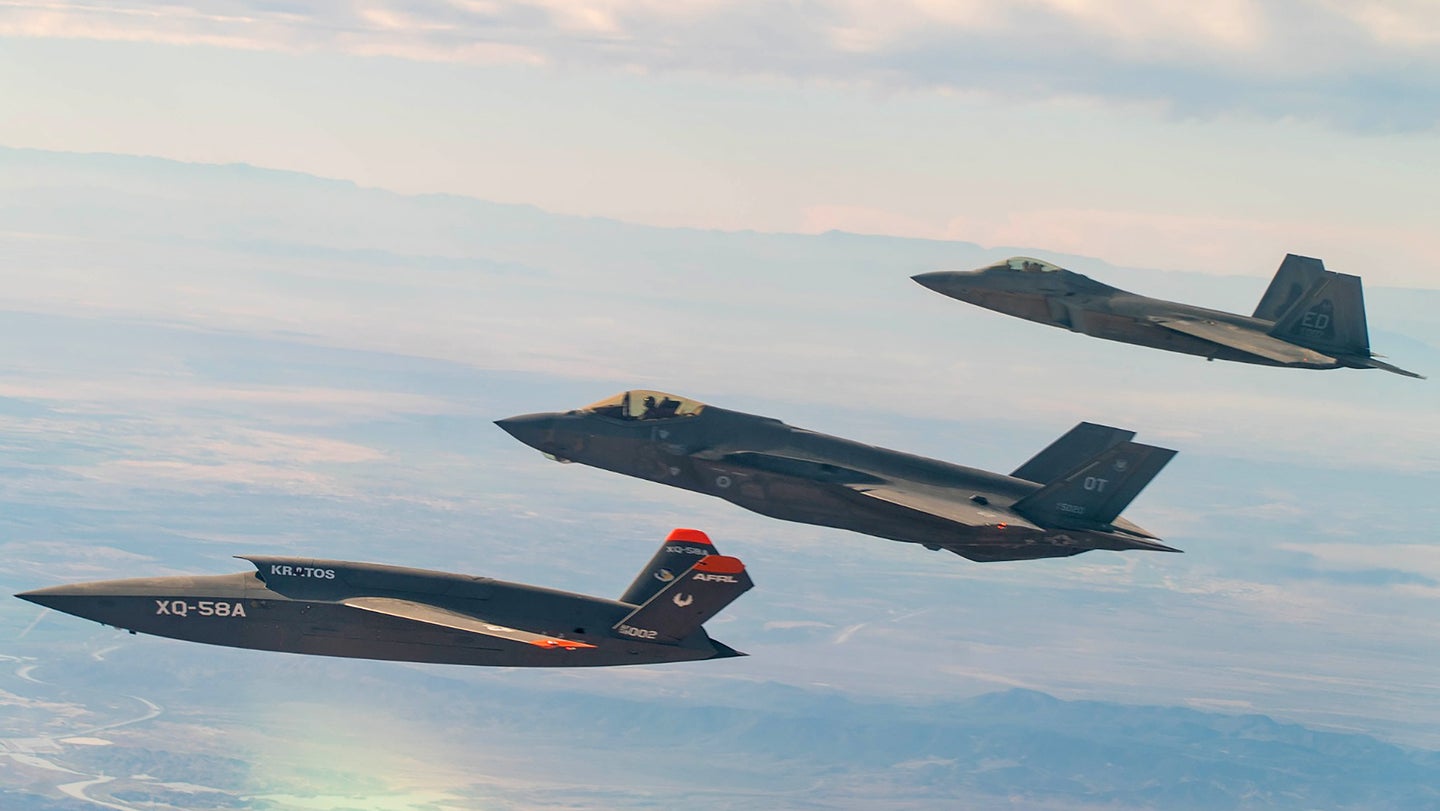
Unfortunately, this is a poor solution, at best, that has major limitations, and one that won’t work in a massive contested theater, like, say, the Pacific. It is also absurdly resource-intensive to connect along what is akin to a line-of-sight limited information chain made up of MADL-carrying stealthy aircraft that spans hundreds or even thousands of miles, before that information would be able to be sent to other battlefield assets and command and control centers. The same can be said for information being pushed forward from those rear-echelon sources to the stealthy combat aircraft downrange. And even then, the bandwidth would likely be limited, and above all else, such a chain would be only as strong as its weakest link—lose one relay aircraft and the entire chain could collapse.
The “EQ-180” solution
So, what’s the answer here? The logical one would be the ‘RQ-180,’ or more like an ‘EQ-180’ variant of it, but we will continue to call it an RQ-180 for simplicity’s sake for the rest of this section.
The RQ-180, from its perch at very high altitude and deep over enemy airspace where stealthy tactical assets like fighters and drones would be operating below, would be able to collect that line-of-sight datalink data from systems like the F-35 and B-21’s MADL, and the F-22’s stealthy Intra-Flight Data Link (IFDL). IFDL cannot talk directly to MADL, incidentally, but the RQ-180 could fuse the data together before redistributing it back to assets below in their proprietary datalink waveforms. This would give each aircraft a ‘god’s eye view’ of the battlespace with the inclusion of every player’s location, status, and relevant sensor data.
This level of data fusion and connectivity drastically increases the fidelity of the info at hand in each aircraft’s cockpit or in each drone’s computerized brain, and thus increases awareness and cooperation, which in turn significantly enhances lethality and survivability. It also makes reliably connecting things like low-flying assets to the greater force a reality as maintaining a line-of-sight datalink with other lower flying assets in high terrain can be very problematic. What’s maybe even more important is that the RQ-180 would also be able to send all that data it collects around the world via high-bandwidth satellite connectivity.
So, not only would this create a much more capable ‘active’ network with free-flowing information over a huge swathe of the battlespace, vastly improving upon MADL’s more limited mesh-like network capabilities and other less capable but still stealthy datalink systems, but it can also feed all that info anywhere in the world and receive and redistribute information over the battlefield from anywhere, as well.
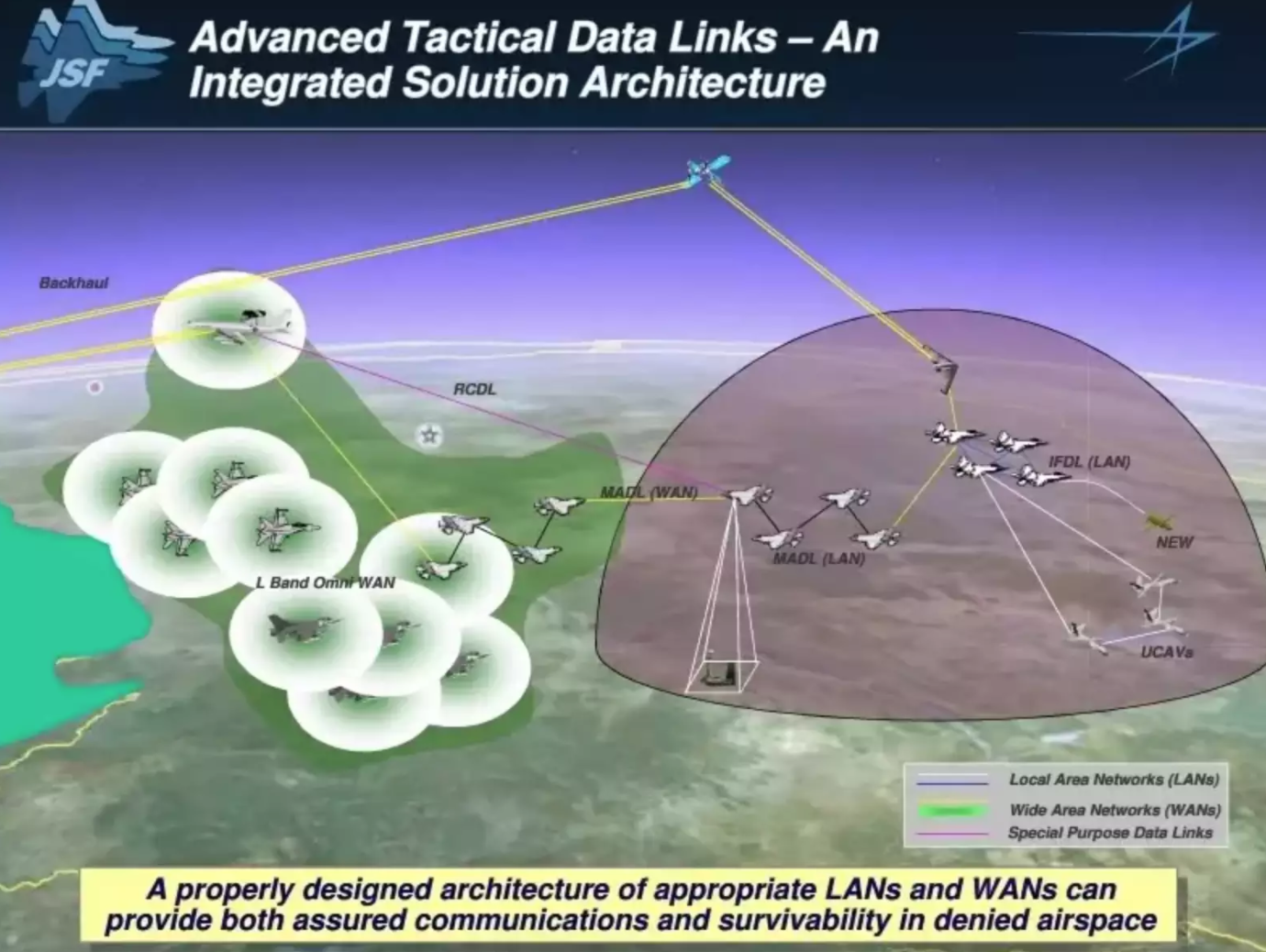
A similar, although a less advanced example of this general concept is flying today, but its mission is not about linking stealth aircraft together in contested airspace. In fact, it is entirely vulnerable to nearby enemy actions. What we are talking about is the Battlefield Airborne Communication Node (BACN), a communications gateway payload presently carried by the EQ-4B variant of the Global Hawk and the E-11A, which you can read all about in this past feature of ours.
Another existing datalink fusion capability is the Roll-On Beyond line-of-sight Enhancement system, or ROBE, which can be installed on some KC-135 tankers and enables an ‘active net’ for Link 16 and Situational Awareness Data Link (SADL) used by legacy non-stealthy assets. It can fuse information from aircraft with those disparate datalinks together and rebroadcast a common picture back on their individual waveforms. Once again, this drastically enhances the situational awareness and cooperative potential of aircraft flying in the battlespace.
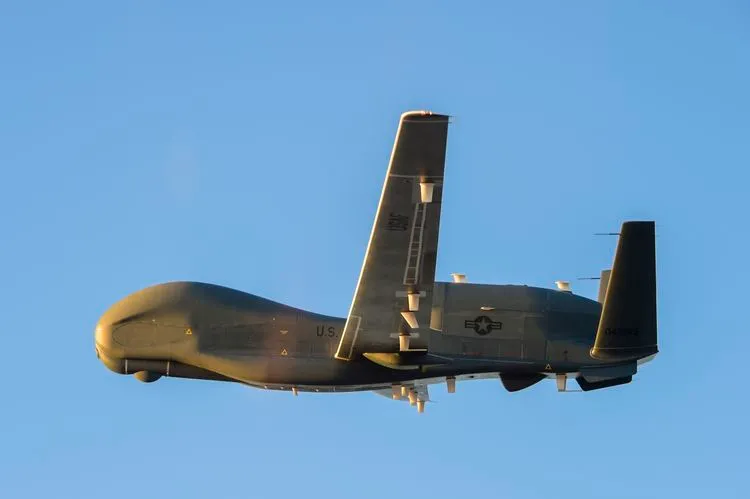
Acting as the ultimate force multiplier, a very low-observable, high-flying drone with a communications gateway package would also allow commanders thousands of miles away to see exactly what is going on with their ‘invisible’ aircraft fleets operating downrange over very dangerous territory. Once again, this would occur via relaying a completely fused ‘picture’ of the battlefield collected through all the assets the RQ-180 is connected to. It would also allow those commanders to make changes to the battleplan in real-time, piping down orders from around the globe via satellite to the RQ-180 and onto the stealthy players below via their own low probability of intercept datalinks. In addition, those stealthy aircraft could also take full advantage of all the real-time intelligence the Pentagon and its allies have to muster, regardless if it is collected by something with a stealthy datalink within line-of-sight of them or not.
In other words, an RQ-180 networking aircraft would act as a two-lane information bridge of sorts, reaching far back outside of the battlespace to provide a god’s eye picture of that battlespace and the stealthy aircraft within it to key decision-makers, while also reaching forward, down to those same aircraft with far more information than they could garner on their own or via other aircraft in their own formations. The high perch of the RQ-180 would also provide for greatly increased line-of-sight distances compared to what the combat platforms operating far down below can provide via their own datalink systems.
Supporting the swarm
Taking it another step further, you can see how this capability could be critical for controlling swarms of stealthy unmanned combat air vehicles (UCAVs) from thousands of miles away. We discussed that exact reality half a decade ago, and that requirement has become even more pressing as the era of large fleets of stealthy UCAVs is finally on the horizon. In fact, even swarms of munitions themselves and aircraft launched drones will need to be able to securely communicate basic information outside of their own swarm while deep over enemy territory or while flying at low levels where line-of-sight connections are an issue. An RQ-180 could provide these critical support capabilities and would allow even largely autonomous drones or swarms of munitions to retain some sort of man-in-the-loop basic control, such as approving targets for engagement or even just monitoring their general actions.
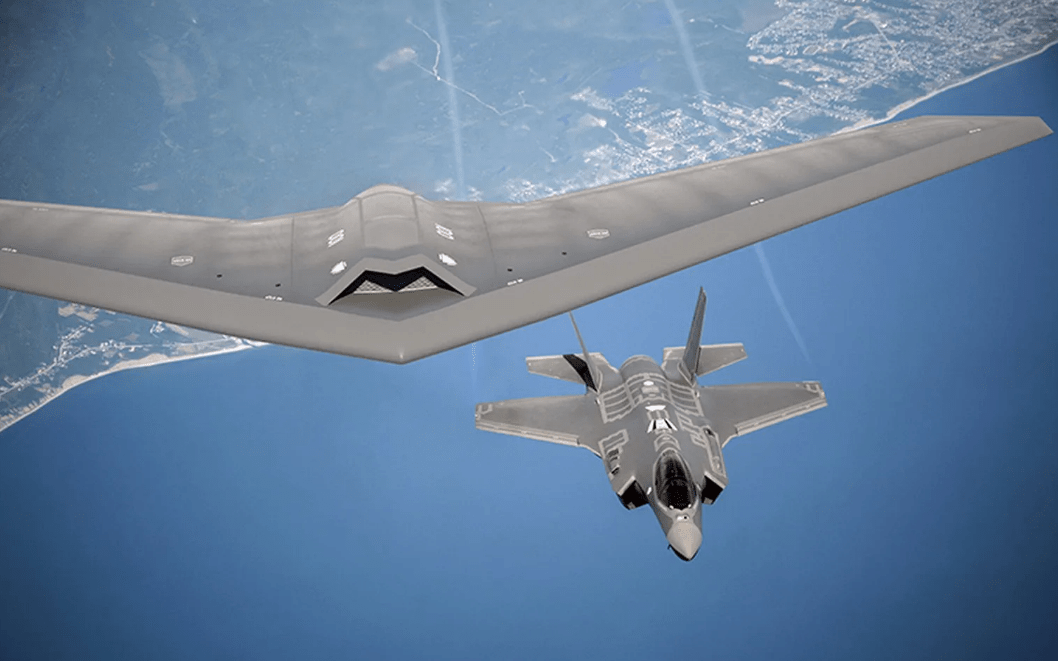
With all this in mind, in the most basic of terms, the RQ-180 could very well provide a highly secure active net over contested airspace, keeping those platforms operating within its line-of-sight connected together and connected to those in command and control facilities far away. As a result, commanders would not just be in the know, but also in control of the battle as it unfolds.
The possible existence of an RQ-180 information gateway also lessens the need to install advanced satellite communications terminals on smaller tactical assets, and the concerns over network security and stealthiness that go with that. By distributing the high-bandwidth satellite capabilities to a networking and communications gateway orbiting high above, it will also allow for the production of lower-cost, higher-performance, and more survivable tactical aircraft.
On the unmanned swarm side of things, we established in great detail how the idea of creating a single vehicle with every capability, like how modern fighter aircraft are traditionally configured, is a dead way of thinking years ago. That notion has only become that much more clear as the years have gone by. Instead of say two drones in a swarm of a dozen needing to carry a major satcom system, maybe none would require it with an RQ-180 overhead. Simpler satellite links for sending very basic information and commands could be used as a backup on those aircraft, nothing more.
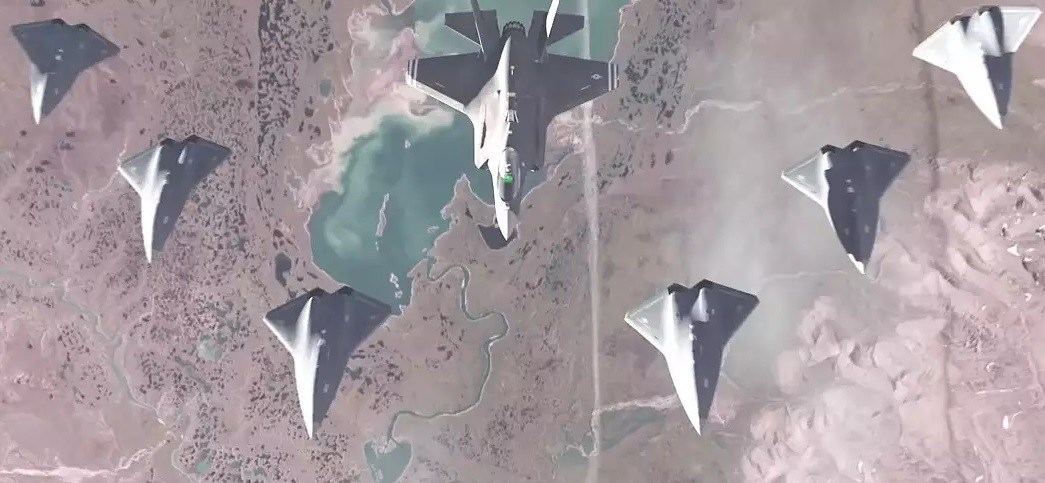
When attritable stealthy drones are concerned, which are meant to be put in very high-risk situations where they could be lost, keeping high-end datalink hardware off them may be essential to maintain security over America’s best communications technology. The RQ-180 could potentially help with making this a non-issue by taking on the high-end side of the necessary communications architecture to operate these drones.
A flying AI data cruncher
Just dealing with the immense amount of data all these forward-operating assets will be able to collect will require an advanced central data fusion and filtering capability. This can be done by using artificial intelligence and machine learning to sift through all the information and pare it down to what is most important and send those curated data sets to different ‘customers’ around the globe and back down to its players below.
For instance, what an F-35 could need in terms of battlespace information may not be the same as what a reconnaissance drone may need or a swarm of loitering munitions, so automating the distribution and filtering of this information would be key to make the best use of the bandwidth available and to minimize transmissions. This is even more essential in terms of sending all the information these assets collect around the battlefield to command and control and intelligence exploitation centers all over the world.
Advances in computing and software technology now mean that this level of processing can occur on the platform itself. This is revolutionary as it means that satellite bandwidth will no longer be a primary limitation when it comes to distributing gobs of critical data around the battlefield and beyond. Simply put, the ability to sift through, filter, process, and redistribute piles of data onboard the RQ-180 aircraft itself would be just as revolutionary as its new high-flying stealthy airframe. Such a capability would increasingly allow for far more information to be crunched and delivered to those who really need it and as quickly as possible.
This is not science fiction. The technology is already a reality and flying on tactical platforms today. The strategic nature of the RQ-180 working in the role of a critical networking node operating in denied airspace and the number of connected assets it would have to serve at any given time would likely make similar disclosed capabilities look quaint in comparison.
At the same time, there is work being done to use ground stations far from an aircraft’s operating area to help crunch the massive amounts of data it collects, as well as data from other sources it may help relay. So this concept sees the data processing being distributed off-board the aircraft, but by centers that are built to deal with it en masse. This requires a lot of communications bandwidth, at least as far as beyond-line-of-sight connections are concerned, and an aircraft like an RQ-180 could potentially provide that.
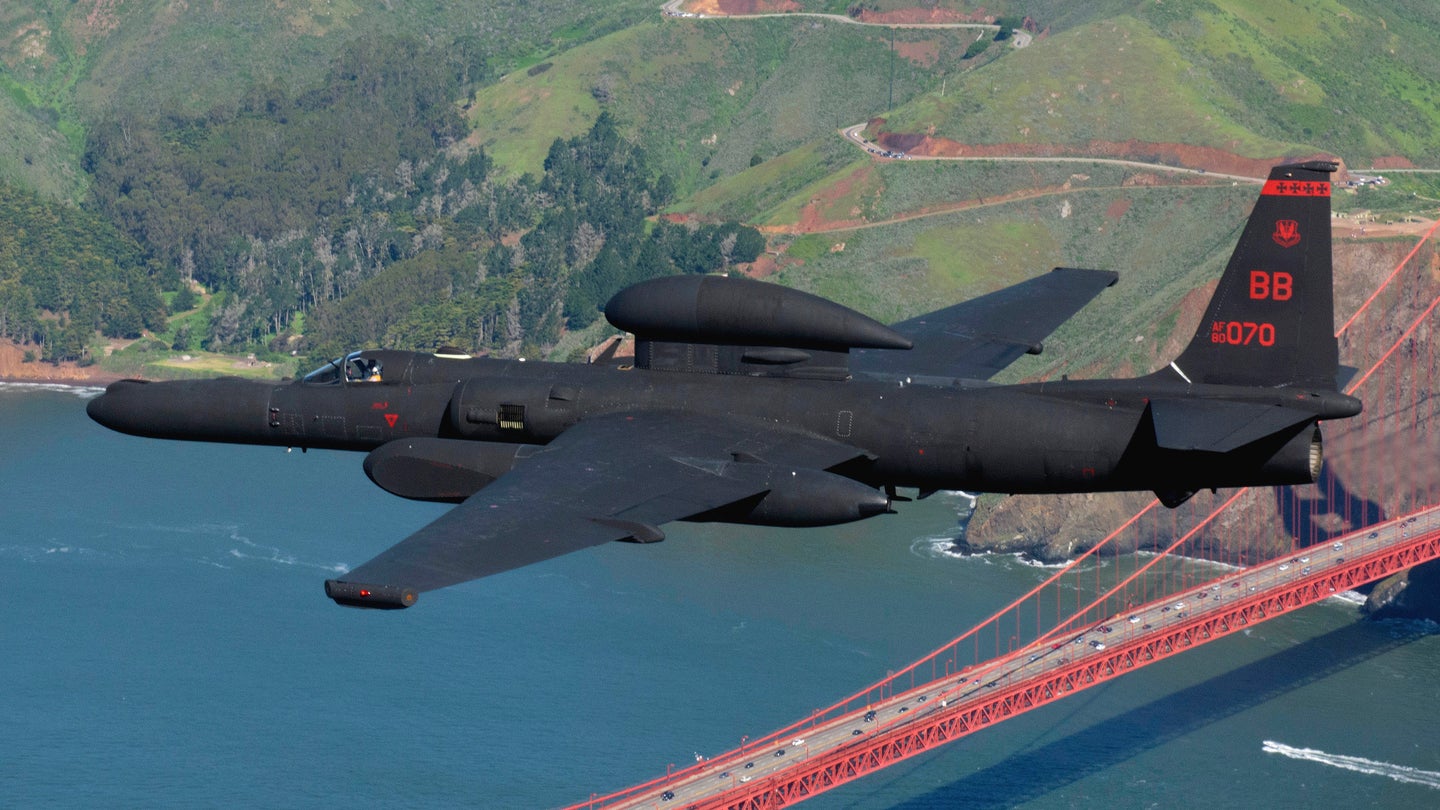
In addition, the Air Force is also already working at sending live software updates and configuration changes for everything from ground target recognition algorithms to electronic warfare programming in near real-time to its combat aircraft operating anywhere in the world. The RQ-180 would be critical in seeing such a concept become a reality over a hotly contested battlefield where it would be needed most, providing assets under its purview with the latest changes sent down from command and control centers that are reacting to the battlefield in real-time, possibly in part due to the info the RQ-180 relays.
Even ordering-up these changes autonomously from the RQ-180’s artificial intelligence-driven computing capabilities is a possibility. In other words, the RQ-180 could work not just as a high-bandwidth networking node and universal translator of sorts to deliver these updates, but also as the brain for helping aircraft with less computing power, such as swarms of attritable drones, cruise missiles, or electronic warfare-enabled decoys, make real-time updates to their software to help them better execute their missions. If you think this sounds far-fetched, it is anything but.
Laser connectivity
On the secure satellite communications side of the equation, a high-flying craft, with literally nothing flying above it, would be very challenging for an enemy to jam or intercept its communications, even if it were to use radio-frequency (RF) satcom links. What most people don’t realize is there is a near impossible to jam alternative to those RF datalinks that is uniquely suited for an aircraft just like the RQ-180.
What we are talking about here is a laser satcom capability, which is not only extremely secure and jam-resistant, but it’s also very fast. Laser satcom terminals have come a long way over the years—for instance, Elon Musk’s Starlink constellation of satellites is set to communicate with each other based on a laser mesh-like network concept. Due to the heights involved with a HALE drone like this, it would be flying above any weather that could degrade its capabilities. In fact, pairing the RQ-180 with a high-bandwidth constellation like Musk’s Starlink, at least partially, for distributing data from across the globe, would provide incredibly resilient satcom capabilities even during a peer state conflict in which more traditional unitary communications satellites will be far more vulnerable to a wide array of enemy attacks. The Air Force is already leveraging Starlink for its future combat networking needs and is working on building out similar mesh-like satellite networks, including those for more focused strategic tasks.

It doesn’t have to be a distributed satcom concept like Starlink, either. More traditional satellite communications platforms would work too. The laser communications concept is the key here. Laser satcom systems are also extremely high-bandwidth, and are able to send huge amounts of data in small amounts of time.

The bottom line is that the writing is already on the wall for this technology, the DoD knows it, and it is already being adapted for unmanned aircraft in the unclassified realm. So, considering how well suited this communications application is for an RQ-180 information gateway aircraft, we would expect it to exist, at least eventually, alongside established and emerging secure RF satcom capabilities. This would give the aircraft multiple ways of communicating beyond line-of-sight, which would be key for resiliency, survivability, redundancy, and for overall flexibility of the system.
Greater potential
While networking aerial assets clandestinely that are operating in contested airspace would be the obvious role for an information gateway-enabled RQ-180, other assets could also be networked along with them. This includes naval and ground elements that may be operating in or very near enemy territory. In fact, it’s key to consider that the nature of the concept as we described it is ‘customer’ and platform-agnostic, as far as what can be connected, although for within line-of-sight operations, the need for low-probability of intercept communications hardware may be limiting.
Still, any asset connected to a larger, more common, and even less secure network could theoretically share or exploit information that is parsed and passed through the notional RQ-180. In other words, a ship that may be right below the RQ-180 may not have the right datalink to connect to it within line-of-sight, but it can connect to the larger network the RQ-180 is plugged into via its satcom system and connect or share data with the drone that way. That could be info from a standoff electronic intelligence-gathering plane sending electronic threat intelligence to F-22s that are loitering hundreds of miles away or a ship using data garnered from that same F-22’s sensors to target an SM-6 surface-to-air missile. Likewise, special operators on the ground could potentially use the RQ-180’s capabilities to connect securely with the submarine they deployed from, a drone carrying weapons in the battlespace, or a command element halfway around the globe, depending on the mobile communications hardware that comes available in the future.
Such a system like the RQ-180, or a handful of them flying over the battlefield at the same time, as part of their data connection duties, could even provide critical navigational capabilities to its ‘customers’ below that may be cut off from GPS. You can read all about this incredibly pressing issue, here, here, and especially here. In fact, we can assume the RQ-180 will have one of the most robust navigational suites ever installed on a combat aircraft, including possibly long-established capabilities that work outside the need for navigation satellite connectivity in order to move about the battlefield with great precision. As such, they could potentially lend this relative positioning data to their surrogates below so that their own inertial navigation systems can be updated without the help of GPS.

So, with all that being said, a networking gateway RQ-180 would serve as the nexus between platforms operating in a contested battlespace and everything else, including those who are commanding the battle as a whole. In other words, we are not talking about another networking node here, we are talking about a technological linchpin that would allow for long dreamed of future combat networking concepts for operations in contested territory to become a robust reality.
High-flying and deep penetrating strategic intelligence-gathering platform
This mission is a bit more straightforward and what most think about for a platform like the RQ-180, but its lineage is very important to understand. The problem it addresses isn’t new, but the urgency in solving it surely is.
Going back to the Pave Mover program of the late 1970s and 1980s, sensors were developed to track enemy movements on the ground with great precision over large areas and in all weather conditions. This was primarily achieved via ground-moving target indicator (GMTI) radar capabilities that were developed out of that program.
Basically, GMTI allows for battle managers to see the enemy’s ground movements in near real-time and then quickly adapt their gameplan to avoid or neuter those enemy forces before they can attack or even pose a threat to friendly forces. Even during peacetime, GMTI has become a critical capability for detecting changes in force posture, documenting patterns of enemy movements, and identifying new potential targets of interest. Some of this intelligence collection and classification is also achieved via a different radar mode—synthetic aperture radar (SAR). This basically provides a satellite-like image of a target area using radar. It also has the ability to see some things optical systems cannot and it can work under nearly any atmospheric conditions, day or night.

On top of these functions, there is also a passive electronic intelligence collection mission that allows for radio frequency-emitting threats to be quickly detected and geolocated via onboard antennas and interferometry-based computing. You can imagine how using all three capabilities combined can be very effective. Basically detecting a target or target group of interest, possibly passively at first via their own RF emissions, then training an advanced radar with GMTI and SAR on it to rapidly build-up a high-quality understanding of what is actually going on far away. Then target coordinates can be quickly generated and weapon systems can be tasked with eliminating those targets.

GMTI, SAR, ELINT unleashed
These combined capabilities aren’t just important for accelerating an offensive against an enemy force, they can be critical to saving friendly forces in the air, on the sea, and on land from running into an ambush. For fighter and bomber aircraft, the wars of the future will feature agile ground-based air defense systems that can pop up virtually anywhere and can shoot down aircraft over long ranges. As such, being able to watch over a huge area for these unpredictable threats will be essential.
For instance, by seeing the movement of a peculiar set of vehicles on the ground via GMTI, then identifying it as a SAM system via SAR or ELINT, you can kill it before it even gets a chance to potentially threaten friendly forces in the air. Really, this intelligence capability is arguably even more critical for forces on the ground, basically allowing them to know what potential enemy movements are occurring in their vicinity or even staging for an assault some distance away. Also, being able to watch for changes in an enemy’s strategic posture via GMTI and SAR can be advantageous.
GMTI and SAR were proven to be highly valuable during Operation Desert Storm when the capability made its operational debut in the form of the E-8 Joint Surveillance and Target Attack Radar System (JSTARS)—an aircraft that was the main product of the Pave Mover program. It proved itself again over a decade later during the opening stages of Operation Iraqi Freedom, this time being fielded on a few additional strategic platforms, with the E-8 still being the centerpiece capability. GMTI and SAR radar capabilities have been improved upon greatly ever since and have become radically miniaturized and widely distributed to many more types of aircraft, to varying degrees of capability.
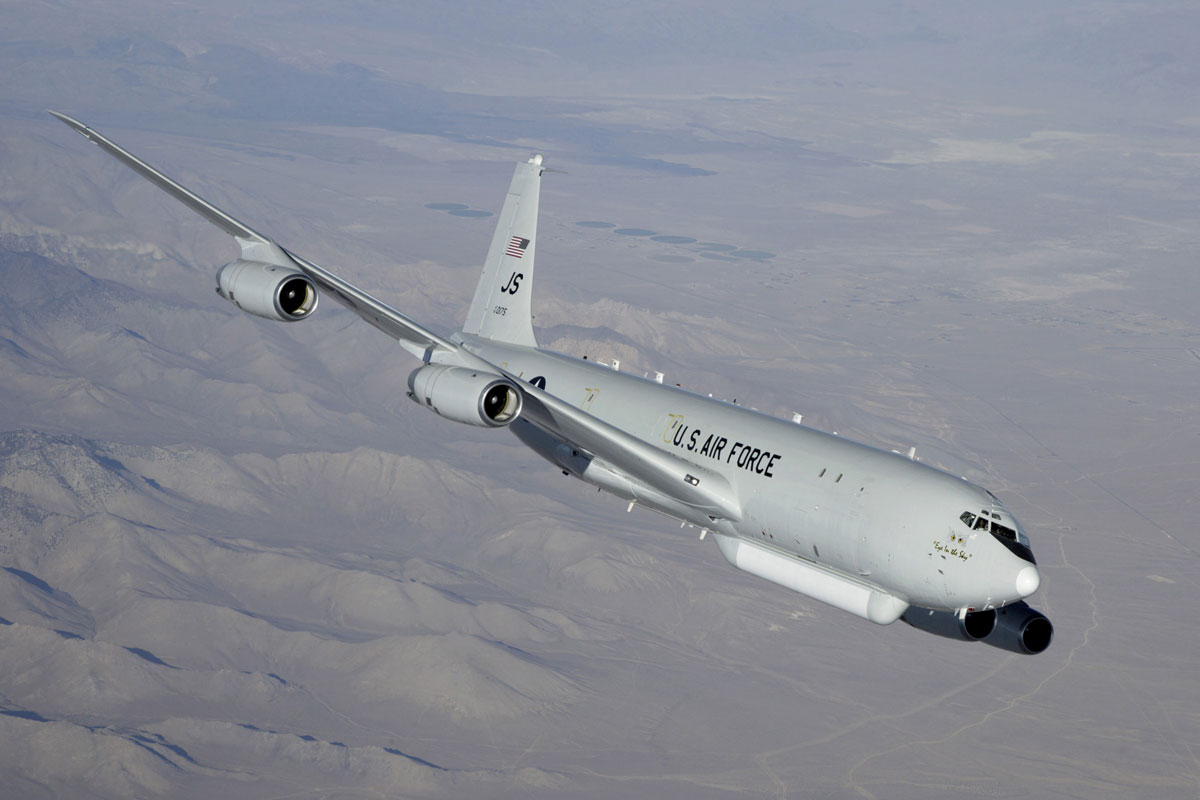
Unsurvivable platforms with capabilities that need to survive
The only problem is that when it comes to strategic, wide-area radar and electronic surveillance of this nature, the aircraft the U.S. military currently has to do these reconnaissance missions are vulnerable when operating even near contested airspace and they cannot penetrate into it whatsoever. The Air Force discovered this reality the hard way early on, literally 60 years ago, when Gary Powers was shot down in his U-2 Dragon Lady. This reality really hasn’t changed. Today, the U-2’s advanced electronic warfare system can give it some protection from limited enemy attacks, but it simply is not designed to weave its way into enemy airspace and persist there. The reality that a pilot is at risk is another huge factor. The RQ-4 Global Hawk, while eliminating the risk to the pilot, is a sitting duck outright.
Both of these aircraft have the ability to collect SAR/GMTI, electronic, and optical intelligence, but from a relatively safe space. Other U.S. aerial standoff surveillance assets, such as the RC-135V/W/U Rivet Joint and Combat Scent aircraft, as well as the aforementioned E-8C JSTARS aircraft, are even more vulnerable and have dozens of souls on board.
Now, package the latest low-probability of intercept GMTI and SAR radar capabilities, as well as passive electronic intelligence gathering capabilities, together on a very stealthy long-endurance airframe and perch that airframe way up above any tactical assets, say at 70,000 feet or more, and you have a huge line-of-sight to detect pop-up threats or otherwise just keep watch on the enemy’s movements over very long periods of time. The same can be said for image intelligence gathering using optical sensors, albeit to a lesser degree. While being able to peer into denied territory from the safety of international airspace is one thing, being able to do so right over enemy territory for dozens of hours a time would require less powerful optics, provide for enhanced resolution, and would allow for high-definition video streaming capabilities. Above all else, it would produce absolutely amazing intelligence.

So, the requirement is clear. You need something that can not only penetrate enemy airspace at high altitude, but also persist there for long periods in order to collect multiple types of high-quality intelligence. When combined, those intelligence products can offer an unprecedented level of fidelity. You can not only fly deep inside contested airspace to detect the enemy, but you can watch their movements over time without them ever knowing you are there. Think of it metaphorically as shooting an outdoor birthday party from 200 feet away and letting everyone know you are there doing so compared to recording it with an HD camcorder right amongst the participants without them ever knowing. We are talking about a quantum leap in the quality of intelligence being collected, not just a new platform to collect it.
This type of capability was certainly a major factor as to why the Air Force decided not to buy another converted private or commercial jet aircraft to carry its new GMTI/SAR radar system that would replace the rapidly aging E-8C JSTARS. That platform would be near useless in a peer-state conflict today. The enemy’s anti-access bubble is simply so large that such an asset wouldn’t just be vulnerable, its capabilities would be irrelevant as the target area locations would exceed its line of sight and radar’s reach by a huge margin.
The same is true for the younger RQ-4 Global Hawk program, which really just hit its stride. The Air Force has now said it wants to drastically truncate that program, making loose references to something better that doesn’t even officially exist—although we know that isn’t the case. Under recent plans, just a handful of the newest Global Hawks, the latest Block 40 models, would be retained, with dozens of the earlier examples being retired. Even the Block 30 examples were built to supersede earlier block aircraft that were either retired, given to NASA, or converted into flying EQ-4 gateways, as we mentioned earlier.

Even the U-2 has been on the chopping block in recent years and could be again in the not-so-distant future. Once again, its replacement? Outright it seems like a murky hole of information. It’s pretty clear that the answer, at least partially, is that the USAF has something much more relevant, the RQ-180, and it is maturing into an operational state. This aircraft will be a key intelligence collection node using its own sensors, but it is also likely to also be the centerpiece of an ecosystem that will revolutionize the GMTI/SAR mission by distributing it across many platforms operating in contested areas of a battlefield.
The center of a revolutionary GMTI/SAR/ELINT hub
In reality, it isn’t like a notional RQ-180 would be the only replacement for E-8C JSTARS, most of the Global Hawks, and even possibly the U-2s, although one could easily argue that retaining a manned asset like the U-2 for a number of tasks in which an asset on the level of the RQ-180 is not needed would still be very important. By having the networking functionality being also part of the RQ-180 program, it can do what these other standoff assets can’t—support the distribution of aerial battlefield intelligence collection duties during a peer-state conflict.
This distributed ecosystem is emerging as one clear aspect of the Air Force’s future radar intelligence-gathering strategy that is intended to work as a replacement for JSTARS and much more. Instead of one lumbering plane providing GMTI from far away, you can use all types of assets equipped with ever more modular active electronically scanned array (AESA) radars, including UCAVs and other drones, as well as stealthy fighters and bombers, or even in some cases legacy fighters with new radars and podded systems, to collect this data as needed from all over the battlefield.

This diverse array of assets operating over and beyond the front lines still needs to be able to transmit all the potentially actionable radar data they gather so that it can be leveraged by commanders in near-real-time. Once again, that’s where the RQ-180 comes in beyond its own utility as an intelligence collection platform. It could collect this data from these various platforms within its huge line-of-sight radius while operating over contested airspace and then filter and fuse it before sending it all around the globe for exploitation. As such, you can see how the two capabilities—networking and reconnaissance—are tied directly together for the RQ-180 concept.
Just as an example, let’s say an RQ-180 is up over enemy territory, as well as a swarm of a dozen UCAVs, a flight of four F-35As, four F-22s, an RQ-170, and a pair of B-21s. Some of these assets can be tasked to use their own advanced radars to provide SAR mapping or GMTI of particular areas of interest, while the RQ-180 also collects this type of information on a far wider swathe of the battlespace. This type of coverage can be prearranged by sectors or based on other real-time intelligence that points to needing a closer look at a particular area or to help guide incoming missiles to their potentially moving targets. It can even be provided in a secondary capacity as part of an aircraft’s primary mission.
For instance, a B-21 could map its target area for its own use, but also send off that SAR information it has already collected for further dissemination. After hits its target, an RQ-170 could fly in, take a SAR map of the target as well, and send it up to the RQ-180 acting as a relay that then passes it on to an operations center far away for bomb damage assessment. Even the RQ-180’s own wide-area mapping could help identify targets of interest for these other platforms to investigate. In doing so they could pipe their data over low-probability of intercept datalink to the RQ-180 so that it can be fused or even parsed and sent around the theater and the globe for rapid exploitation. You can also imagine how a flight of stealthy drones equipped with modular radars could make quick work of scanning a particular area cooperatively in very high detail. While they may be able to do this, they may not have the secure satcom link or processing ability necessary to send all that info quickly to whoever needs it. That would be the RQ-180’s job.
In other words, yes, a reconnaissance-equipped RQ-180 should be able to collect GMTI and SAR and ELINT, and even possibly some image intelligence, if properly configured, like no other platform can, right over the enemy’s backyard. But its networking capabilities should also enable the distribution of more of that type of data collection to other assets all over the battlefield, resulting in far more widespread and more resilient radar intelligence-gathering capabilities than just what another vulnerable radar plane or Global Hawk, or even an RQ-180 alone could provide alone. So, we are talking about a revolution in how this battlefield intelligence is gathered, not just a new airplane that can gather the same type of intelligence, but in a stealthy manner.
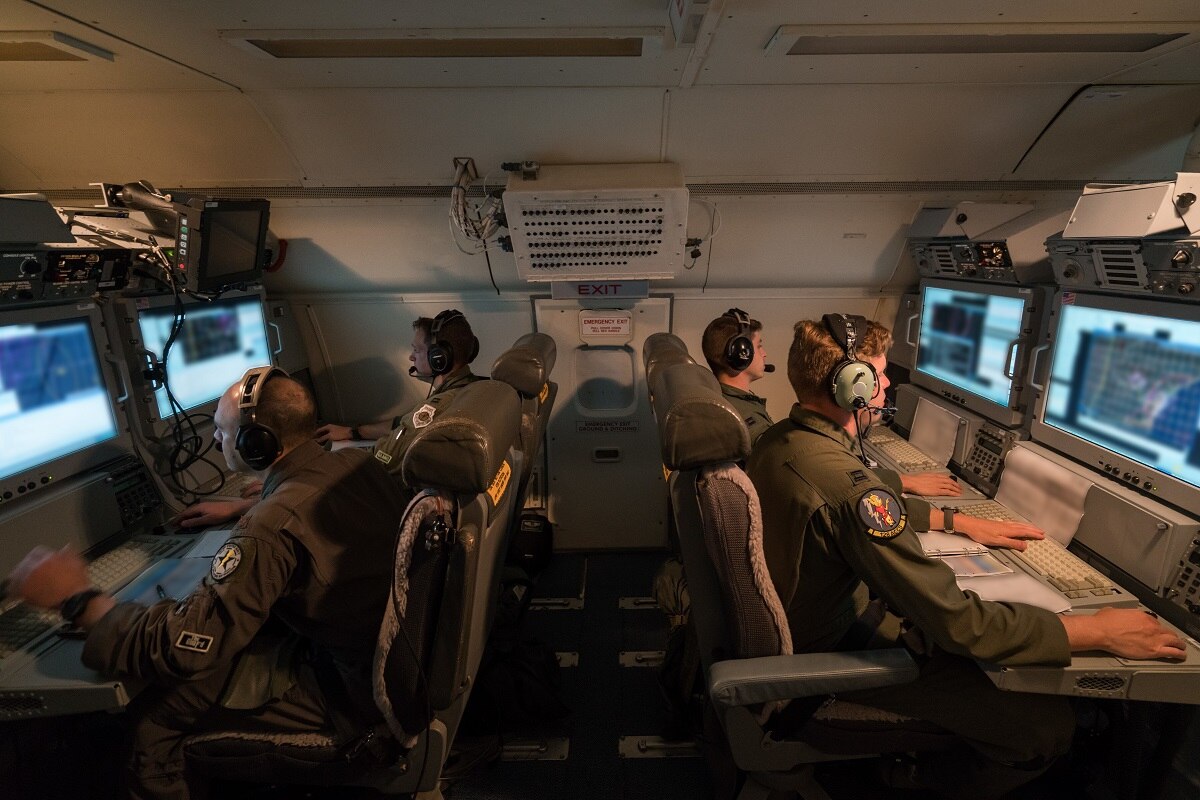
Evolution is key and the network is king
Does all this mean that each RQ-180 airframe would need to be equipped for reconnaissances and to act as a full-on networking gateway at all times? Probably not. The complete networking package could be a modular system that can be fitted depending on the missions, or two types of Q-180s could exist, or are at least are planned to exist, much like what we have seen with the evolution of the Global Hawk—a networking version and a reconnaissance version. But no matter what, the aircraft needs secure satcom capabilities to do its basic reconnaissance mission regardless of its configuration, at least in most scenarios we see it being used. So, evolving a reconnaissance-centric RQ-180 into a flying information gateway variant, or to do at least some of that job while also performing its organic reconnaissance functions, isn’t just an extremely logical evolution, it seems to satisfy what is becoming among the Air Force’s most urgent priorities.
In fact, even by the Air Force’s own standards, the advanced networking mission may now even be more important than the penetrating strategic reconnaissance mission as it would enable so many other aircraft that are flying directly over the battlefield to provide similar reconnaissance data in near-real-time. It would also do this while potentially drastically enhancing all those aircraft and other assets’ awareness and survivability, not to mention their connectedness to command and control centers and to other platforms on the battlefield and around the globe.
Evolutionarily speaking, one could imagine how the first RQ-180 would prove the basic strategic penetrating reconnaissance functions, then enhancements would build on its ability to use its inherent advanced communications suite to pipe-out similar reconnaissance data that it receives from other aircraft operating within line-of-sight over contested territory. This would largely require just a passive “receive-optimized” type of arrangement and would not require the RQ-180 to provide data fusion and rebroadcasting services for the aircraft that connect to it. In other words, it would be just about conveying battlefield intelligence, not about creating an active network with two-way communications for stealthy assets over the battlefield. Then a full-blown and dedicated ‘EQ-180’ networking gateway could be developed that would accomplish all the aforementioned networking tasks, but may not have the organic reconnaissance capabilities of its progenitor.
Another factor that is worth noting is that the same powerful and fast-scanning AESA radar arrays that would be the key component to this aircraft’s GMTI/SAR capabilities could also be used for high-bandwidth secure communications and for making electronic attacks on targets of opportunity or of a defensive nature. As such, the aircraft would have a latent electronic attack capability that could also prove hugely beneficial not just to its own survival, but also to the survival of forces under its purview over the battlefield. Communications wise, those same arrays could connect the RQ-180 with non-satellite nodes that are within line-of-sight, such as a ground entry point or one at sea, or even with a non-stealthy platform hundreds of miles away at the edge of contested territory.
Finally, one of the wildcards in this whole equation is what capabilities will the B-21 duplicate, and to what degree? Still, even with the B-21’s yet to be understood abilities, which should be tailored to its core strike role, at least early on, the RQ-180 would only enable the B-21, and vice-versa. In fact, by all indications, the two airframes, made by the same manufacturer, Northrop Grumman, are likely very closely related and are designed to work together directly as part of a larger family of systems, including UCAVs, and to interface with other stealthy assets, from the get-go.
Tying it all together
Of all the indicators that point to the RQ-180 having a core networking mission, as well as a reconnaissance one, two publicly acknowledged Air Force initiatives may actually be some of the strongest. The first of these is the Common Mission Control Center (CMCC) program and the second is the Advanced Battle Management System (AMBS) effort.
The Air Force has publicly described its still-expanding network of CMCCs as follows:
“With the CMCC opening, it will provide combatant commanders, scalable, tailorable products and services for use in contested environments. Using software, hardware and human machine, the center will be able to manage C2 productivity, shorten the task execution chain, and reduce human-intensive communications.”
…
“The CMCC presents integrated and fused multi-domain and Intelligence, Surveillance and Reconnaissance data to decision-makers and will use man-on-the-loop, artificial intelligence and machine learning to reduce human task load while executing its’ mission objective. The CMCC provides products and services and more advanced and inclusive than any legacy Theater Air Control System element.”
In short, this is the exact kind of data fusion backend we have outlined already in this piece and that would demand a platform such as the RQ-180 to properly enable it to reach its full potential. The Air Force itself has also specifically said that this architecture is “designed for use in the contested, degraded environment,” which is exactly where the very stealthy RQ-180 is designed to operate.
The CMCC project dates back to at least 2014. That year, a prototype version of this command and control architecture was demonstrated alongside other open-architecture mission systems that Lockheed Martin had led the development of in order to improve the U-2’s ability to act as an aerial communications and data relay node. Parallel work on both of these fronts continued for two more years. One test in 2017 showed how a Dragon Lady could pass along new targeting information to retask an AGM-158C Long-Range Anti-Ship Missile (LRASM) after launch, using a surrogate for one of those weapons. This is exactly the type of thing an RQ-180 networking gateway would be tasked with as we outlined earlier in this story.

Work on CMCC, as well as the open architecture mission computers able to carry new and improved airborne gateways to go along with it, has continued since then. Related experimentation has also included the demonstration of capabilities well beyond just basic data fusion and information dissemination. One can imagine what must be happening in the classified realm, based on what is being discussed in relation to these efforts publicly.
Overall, the CMCC provides exactly the human interface and backend component for rapid exploitation of battlefield information, awareness in contested environments, and command and control that the RQ-180 would need to be paired with to get the best out of both concepts.
A revolutionary warfighting ecosystem
This is where ABMS comes in, too. Initially, ABMS had stood for Airborne Battle Management System and referred specifically to the proposed replacement of the E-8C JSTARS—which has a battle management function that works alongside its surveillance function—with another manned aircraft derived from a commercial design. When the Air Force canceled those plans, a decision publicly unveiled in 2018 in its budget request for the upcoming 2019 Fiscal Year, the current ABMS initiative emerged to take its place.
Today, ABMS is a far-reaching Air Force-wide initiative encompassing dozens of named programs, ranging from artificial intelligence-driven software to hardware to actual flying vehicles, all centered on developing and fielding a distributed array of fully networked capabilities to revolutionize the service’s ability to wage war. CMCC is now also tied into the plans for this larger ecosystem.
With all this in mind, it is interesting to remember that, in April 2019, members of the 427th Reconnaissance Squadron, along with personnel from the 9th Operations Group, Detachment 5, and the 605th Test and Evaluation Squadron, Detachment 3, were publicly involved in a ceremony to mark the opening the CMCC at Beale Air Force Base in California. Beale is the main hub of Air Force U-2 and the RQ-4 operations, and would likely be the same for the RQ-180, at the very least managing the in-flight portion of its missions, with the aircraft being based, at least initially, at remote locales.
In October 2019, Aviation Week reported that the 427th was involved, at least on some level, in the operation of the RQ-180. Beyond that, Detachment 3 of the 605th Test and Evaluation Squadron is Air Combat Command’s central CMCC test unit and has also been supporting work on various efforts under the ABMS umbrella. That detachment has been linked to the testing and evaluation of the RQ-180, too.
Beyond all this, it now seems clear that the Air Force has found a solution to their JSTARS replacement woes, but isn’t yet ready to openly discuss it. This would make perfect sense because the RQ-180’s surveillance and networking capabilities, combined with the CMCC architecture and the overall ABMS ecosystem, would not only satisfy the GMTI/SAR requirement to a significant degree, but it would also do the same for the battle management aspect. That is what CMCC is all about. Once again, this isn’t just ‘new and improved,’ the RQ-180, CMCC, and ABMS are about unlocking a potential revolution in battlefield surveillance, communications, and command and control.
The bottom line here is that the CMCC, acting as a command and control element and backend data-fusion center for ABMS and for the battle occurring deep in contested airspace, outright demands an aircraft with the RQ-180 reconnaissance and the advanced networking capabilities to enable it. While the concept should still work in a highly degraded state without it, with it, it would truly come alive. The RQ-180 would act as a high-capacity data pipe and reconnaissance maven that also enables many other less capable tactical platforms that can also be used as reconnaissance nodes in areas where traditional assets cannot survive. In the future, the CMCC/ABMS/RQ-180 combo could be leveraged for controlling swarms of advanced drones and hordes of networked cruise missiles and loitering munitions, as well.
In other words, it seems that the RQ-180 is the downrange component that would tie the ABMS and CMCC dream together perfectly, providing unprecedented reconnaissance products and a level of situational awareness and control over battles occurring in the most dangerous places on earth in a manner that would have been deemed science fiction just a decade ago. And we could very well be talking about a number of aircrft configurations, to provide surveillance, communications, and even potentially electronic warfare capabilities, not just one.
With all that being said, even if you take what would be its most basic capability set described in this piece, it is quite possible that this shyest of aircraft is the ‘crown jewel’ in the Air Force’s future air combat ecosystem.
Contact the author: Tyler@thedrive.com
